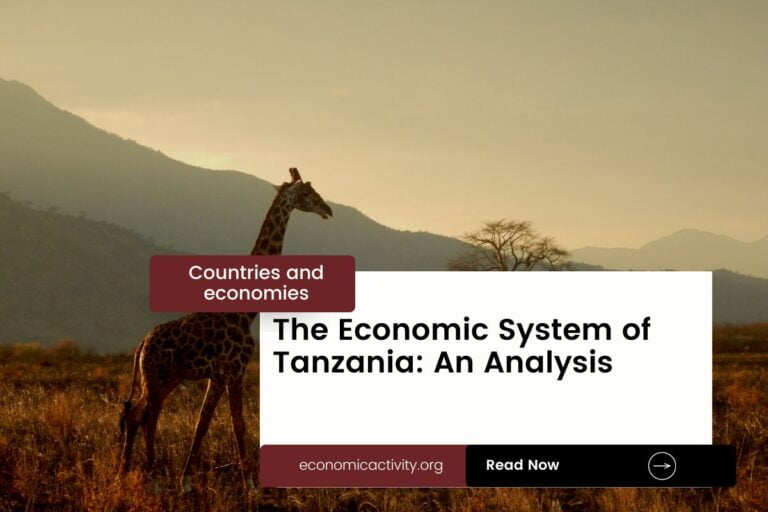Turks and Caicos Islands, with a population of 45,703, is ranked 181 in population size, just behind Cayman Islands. Located in the Caribbean, it covers 950 sq. km, ranking 166 in surface area, below Sao Tome and Principe.
The Turks and Caicos Islands, with a GDP of $1,138,808,881.1 in 2022, holds the 178th rank globally. It follows Grenada, which has a GDP of $1,215,379,155.67. In terms of GDP per capita, the Turks and Caicos Islands rank 45th with $24,917.60. It is surpassed by Oman, with a GDP per capita of $25,056.79.
Despite its small size, the Turks and Caicos Islands maintain a stable economic position, with a focus on tourism and financial services driving its economy.
What are the economic activities of Turks and Caicos Islands?
- Primary activities: 0.5% of GDP.
- Secondary activities: 8.9% of GDP.
- Tertiary activities: 90.6% of GDP.

Primary Sector of Turks and Caicos Islands
The primary sector in Turks and Caicos Islands is predominantly focused on agriculture, despite its small contribution to the GDP. The country’s agricultural land occupies 1.05% of its territory, with main products including corn, beans, cassava, citrus fruits, and fish.
The favorable climate and rich natural resources support the cultivation of a variety of crops and animal products. Agriculture, forestry, and fishing collectively contribute 0.5% to the GDP, highlighting the sector’s significance in providing food security and supporting local livelihoods.
The country’s diverse geological landscape provides a rich array of natural resources. The primary sector thrives on the abundance of spiny lobster and conch, driving economic growth through fishing and exports.
Secondary Sector of Turks and Caicos Islands
What is the secondary sector or what are secondary activities?
The secondary sector involves industries that produce finished products from raw materials. In Turks and Caicos Islands, the main industrial product is construction. This sector plays a crucial role in the economy by creating infrastructure for development and supporting the tourism industry.
In 2023, manufactures in the total exports of the Turks and Caicos Islands are not significant, comprising only a small percentage. The country’s economy relies more heavily on other sectors for its export revenue.
Tertiary sector of Turks and Caicos Islands
What is the tertiary sector or what are tertiary activities?
The tertiary sector in the Turks and Caicos Islands involves providing intangible services to enhance productivity and meet needs. Main activities include restaurants, healthcare, education, banking, communication, tourism, and transportation. These services contribute significantly to the islands’ economy and development.
Specifically, Tourism is a vital economic sector for the Turks and Caicos Islands, with an impressive 1,599,000 annual arrivals, representing 34.99 times the country’s population. Grace Bay Beach and Chalk Sound National Park are among the most popular destinations, renowned for their pristine waters and natural beauty, attracting visitors worldwide.
Another example of tertiary economic activity is the mobile cellular sector, which boasts over 25,000 subscriptions, equating to 110 per 100 inhabitants. This connectivity fosters technological growth, enhancing communication and innovation.
International Trade of Turks and Caicos Islands
Import Activities of Turks and Caicos Islands

The import activities of the Turks and Caicos Islands are crucial, accounting for 38.81% of GDP in 2023, totaling $442 million.
The Turks and Caicos Islands rely heavily on imports, with the US being the main partner at 75%. Imports include refined petroleum, cars, plastic products, furniture, and aluminum structures from various countries such as the Dominican Republic, Italy, Switzerland, and China.
Exports Activities of Turks and Caicos Islands

The export activities of the Turks and Caicos Islands are of low importance, accounting for only 3.64% of GDP in 2023, totaling $41.4 million. This indicates a limited reliance on exports for economic growth and highlights the need for diversification to enhance the country’s economic stability.
The Turks and Caicos Islands primarily export fertilizers, shellfish, plastics, sulfur, and soybean oil. Their top export partners are Togo (61%), followed by the US (13%), Zimbabwe (6%), the Democratic Republic of the Congo (3%), and the Central African Republic (2%).
Turks and Caicos Islands economy challenges in 2024
In 2024, Turks and Caicos Islands continue to face challenges post-COVID-19. The economy, heavily reliant on tourism, struggles. Biodiversity is at risk, unemployment is rising, and the trade balance remains negative. The country’s dependency on fossil fuels adds to its woes.




Leave a Reply